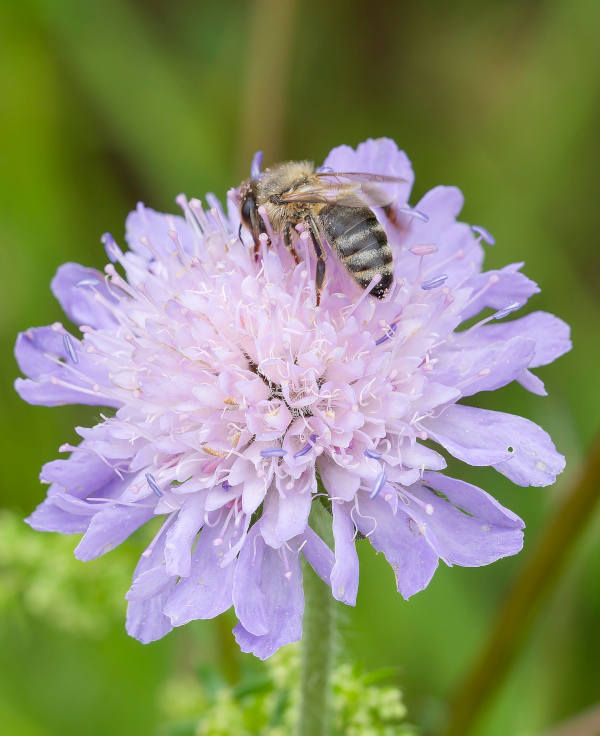How to grow Knautia
This member of the teasel family contains 40 or more species of annual and perennial clump-forming plants. They originate from limestone grassland, scrub, and woodland throughout the world.
Knautia is cultivated for its long-lasting, attractive, scabious-like flowers and ability to thrive with the minimum of fuss. The two key species grown by gardeners are K. arvensis – the UK native wildflower which has light, pinkish-purple flowers and is often included in meadow mixes; and Knautia macedonica which has darker, crimson flowers and is popular for adding airy height to herbaceous borders.
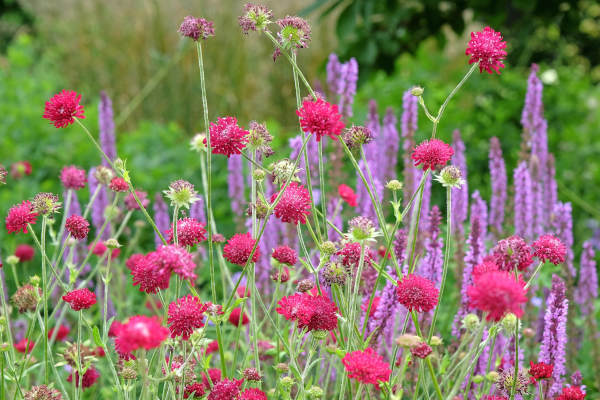
Zantedeschia is a genus of flowering plants from the family Araceae and is native to southern Africa. With a rich history dating back to the Ancient Romans, these deciduous or semi-evergreen perennials have been used as a symbol of celebration. Zantedeschia was Named after Professor Giovanni Zantedeschia, an Italian botanist.
There are two main forms of Zantedeschia: hardy and tender. Hardy forms of the plant can be grown outdoors, enjoy moist soil and full sun or partially shaded conditions - these are known as Arum lilies. Tender forms of Zantedeschia prefer being grown in containers or pots and should be brought inside over the winter - these are known as Calla lilies.
With tuberous flora in all colours from whites, yellows and oranges to deep reds and purples, Zantedeschias are not to be overlooked in any garden, as long as they have sufficient sunlight to grow in.
Ready to learn more about growing Zantedeschia? Read on for all there is to know...

Key Information
Soil pH
Position
Hardiness

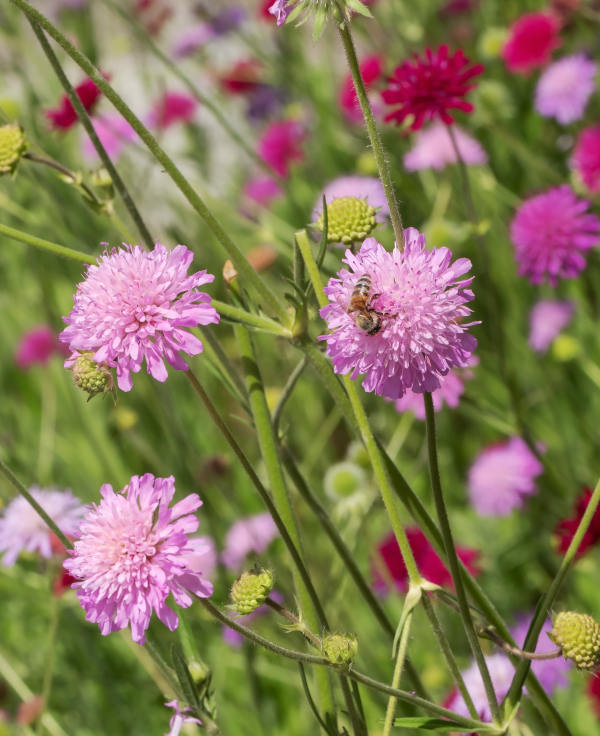
Where & when to plant Knautia
Position- Full sun
Soil- Well-drained, preferably alkaline
Flowering Period- Midsummer to early autumn
Hardiness- Hardy
For best results, plant in autumn or spring. An autumn planting can be done by those gardening in mild conditions (and broadly speaking, this is the southern half of the UK). For those liable to very cold winters, it is best to wait until spring (generally the northern half of the UK). Planting can also be carried out in summer, though be prepared to water regularly.
Knautia enjoys a sunny spot and seems to do best in an average to dry soil which is slightly lean in nutrients (indeed too much soil fertility can cause soft, leggy growth). It makes an excellent filler towards the back of a border or centre of an island bed, and we strongly recommend planting in generous groups of at least five. Any fewer than this can result in the plant being lost amongst more solid, dominant neighbours.
- macedonica can also be grown in a container. We wouldn’t recommend this for K. arvensis as it produces a deep tap root which would resent the constraints of life in a pot.
How to plant Knautia
- Clear the chosen area of weeds.
- Dig a planting hole several times larger than the root ball. If your soil is on the heavy side, now is the time to apply a generous amount of horticultural grit.
- Place the plant in the hole, ensuring the top of the root ball sits level with the surface of the soil. Too low and the plant may rot, too high and the roots can dry out.
- Backfill with soil and firm in gently.
- Soak well with water.
- Mulch around the base with well-rotted organic matter.
In a container
- Choose an appropriate container, ensuring there are plenty of drainage holes.
- It can be worth potting up large containers in situ to save yourself the trouble of moving once full.
- Use a good quality potting compost with plenty of horticultural grit mixed in, and, if not already present in the compost (check the description on the bag) some slow-release plant food.
- Start by partially filling the pot with compost; enough so that when placed on it the upper surface of the root ball is about 3cm lower than the top of the pot.
- Infill all the space surrounding the root ball with compost, firming down with your fingers then adding a little more so the plant is held tight.
- Pick up the pot (if you can!) and lightly tap on the potting bench or ground a few times to help further settle the compost around the plant.
- Soak well with water.
- A mulch with horticultural grit will look attractive and help to prevent a ‘cap’ or crust forming on the top of the compost (something container plants can suffer due to the artificial nature of their watering).
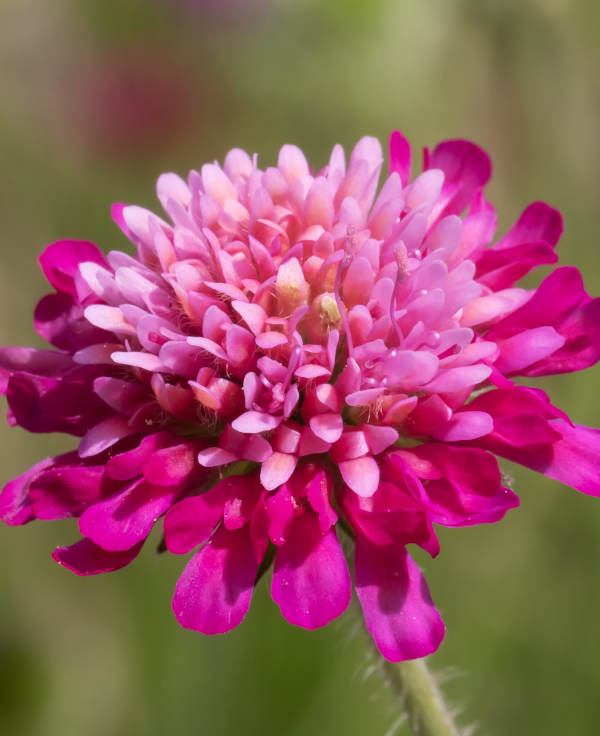
What to plant with Knautia
Knautia arvensis can be used in a wildflower meadow, or a naturalistic border alongside with other ‘wild’ beauties such as catananche, cardamine, persicaria, centaurea, lychnis, and achillea, with some soft, swaying grasses mixed through, like stipa and pennisetum.
Knautia macedonica will improve almost any border or planting scheme with its airy, rich flowers. The crimson and pink tones mix particularly well with blue and purple tones. Think echinops, nepeta, campanula, and verbena. Add some soft, buff-flowered grasses to balance the colours and provide movement. We suggest miscanthus and pennisetum.
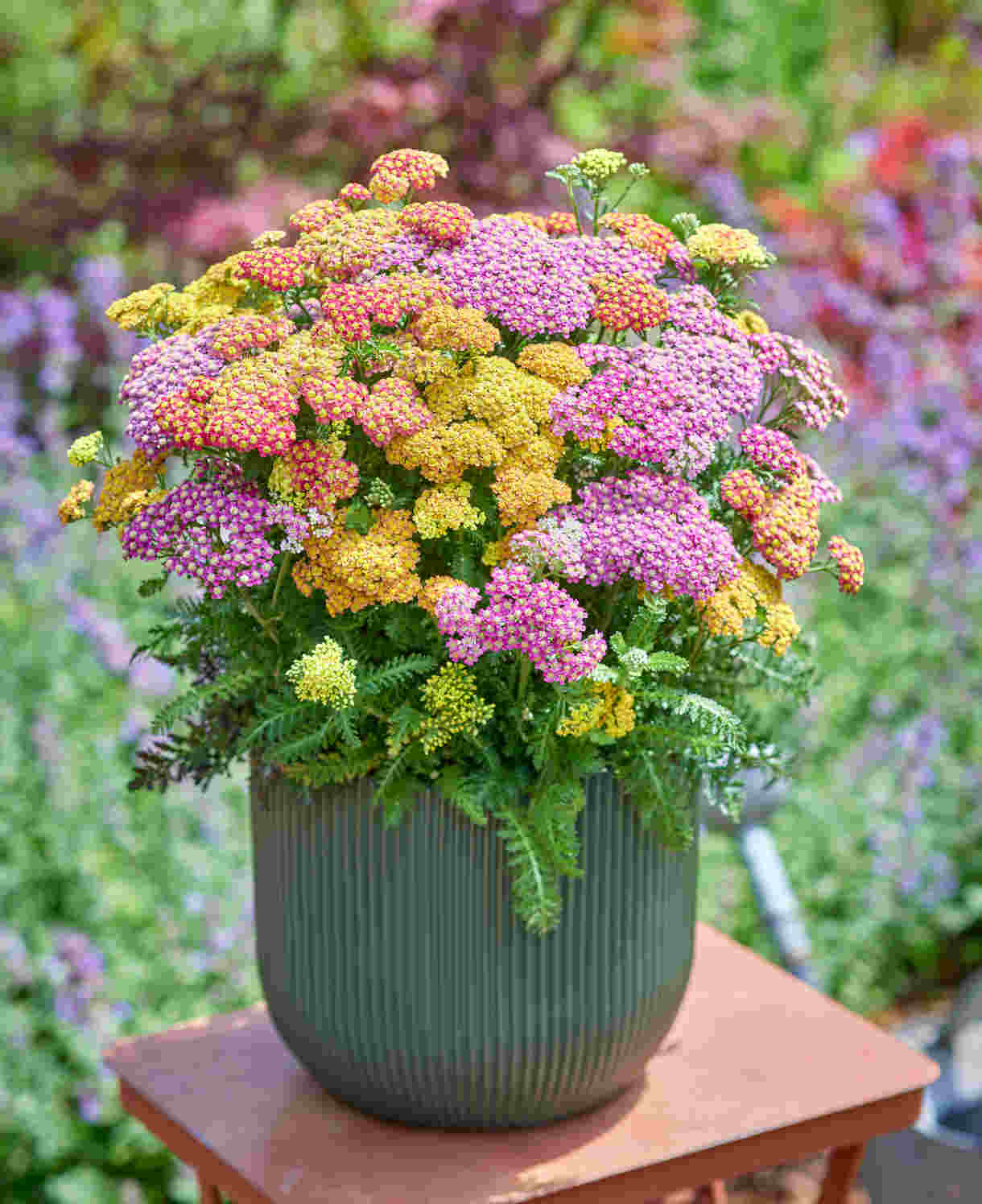
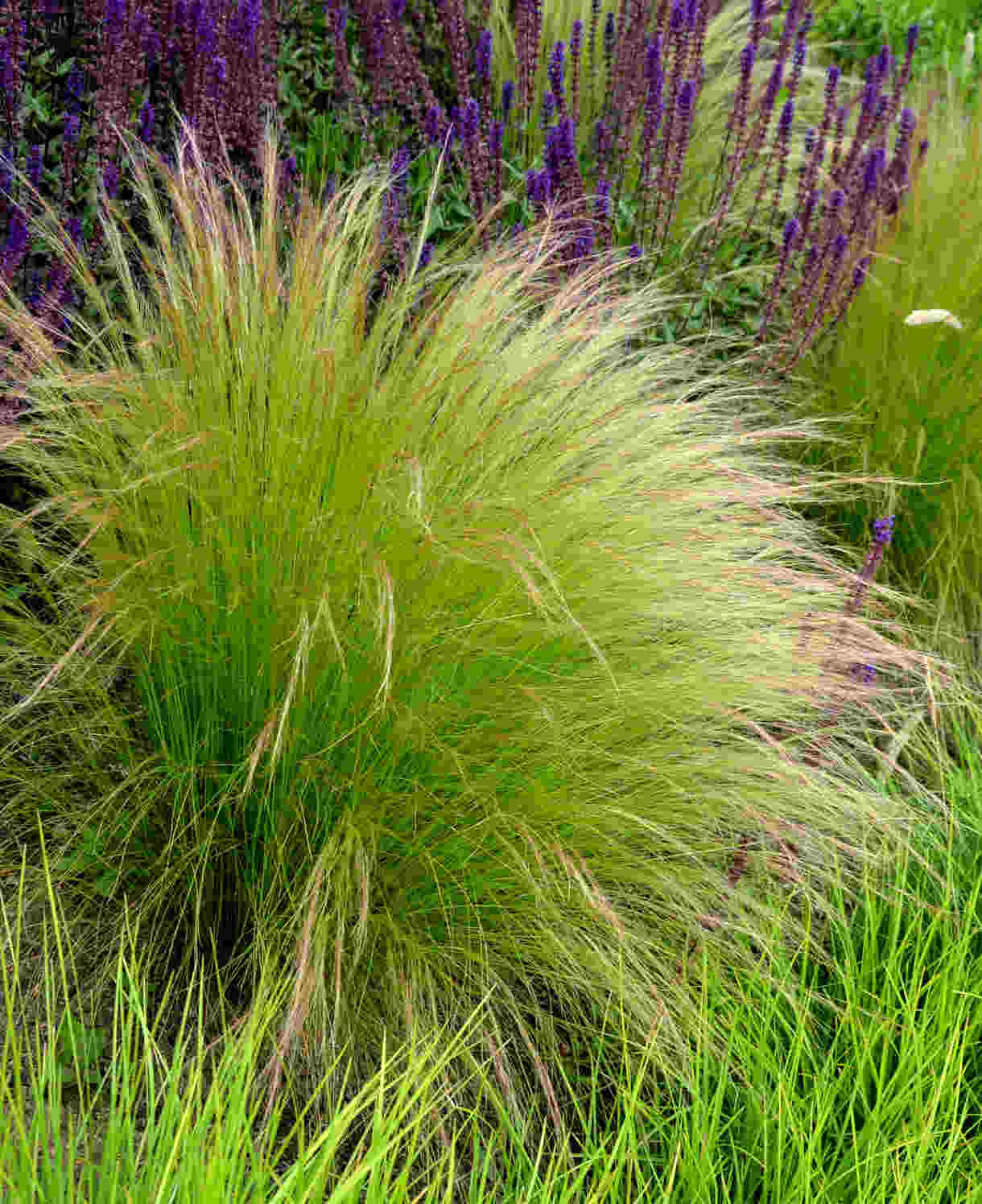

How to care for Knautia
Pruning and Deadheading
Deadhead to prolong flowering.
Cut down to the ground in autumn or spring. Leaving this until spring has the added benefit of providing winter food for birds, which like to feed on the seedheads.
Watering
Water until established (which generally means for the first growing season), after which knautia tends to be drought resistant.
Container-grown knautia will require regular watering throughout the growing season. Allow the top few centimetres of compost to dry out between soakings.
Cold Protection
Knautia is hardy and able to withstand a UK winter outside without the need for additional protection.
Pests and Diseases
Knautia tends to be largely problem-free, though aphids can be something to look out for.
We recommend that the best line of defence be encouraging natural predators into the garden, such as birds, ladybirds, and wasps. This can be done by making wildlife-friendly planting choices, avoiding the use of chemicals, and essentially allowing the garden to find its own, balanced ecosystem. In very pronounced aphid infestations, regularly blasting off with a garden hose or wiping away with a piece of kitchen paper can help to reduce their numbers.
How to propagate Knautia
Knautia can be propagated by basal stem cuttings in spring.
- Find several strong, basal shoots (originating from the crown) around 10-12cm long.
- With sharp secateurs or a knife, sever cleanly from as close to the base as possible.
- Put them in a plastic bag straight away to prevent drying out.
- Fill a container with a compost mix which is at least 50% perlite (or if you prefer, as we do, 100% perlite).
- Remove leaves from the lowest third.
- If the remaining leaves are large, cut them in half with a sharp knife (to reduce water lost through transpiration).
- Insert the cuttings into the compost and water lightly. Several cuttings can be put in the same container if there is enough space to do this without them touching.
- Place in a greenhouse or propagating unit if you have one or covered with a plastic bag on a windowsill if not (out of direct sunlight).
- Keep the cuttings misted and occasionally watered until they root. You will know this has happened when roots emerge out of the bottom of the container.
- Gently remove rooted cuttings and pot them into individual pots. Grow on until they are large enough to be planted out.
Common Knautia questions
Is knautia a perennial?
While annual species of knautia do exist, all of ours are perennial, meaning they die back for winter and regrow the following spring. The only threat to their winter survival is waterlogged ground, so take care to plant in well-draining conditions.
Is knautia the same as scabious?
Though members of the same plant family (Caprifoliaceae), knautia and scabious are two distinct genera. The similarity in their flowers does, however, mean that scabious is often (rather confusingly) used as a common name for knautia, e.g., Knautia arvensis is known as field scabious, and Knautia macedonica can be referred to as Madeconian scabious.
Is knautia hardy?
Yes, all our knautia is as hardy as it gets, able to withstand temperatures of -20°C and beyond.
Does knautia need staking?
Knautia has a wonderful gangly, sprawling habit and will happily lean on close neighbours for support. In more sparsely planted borders or windy areas however, additional help may be needed.
